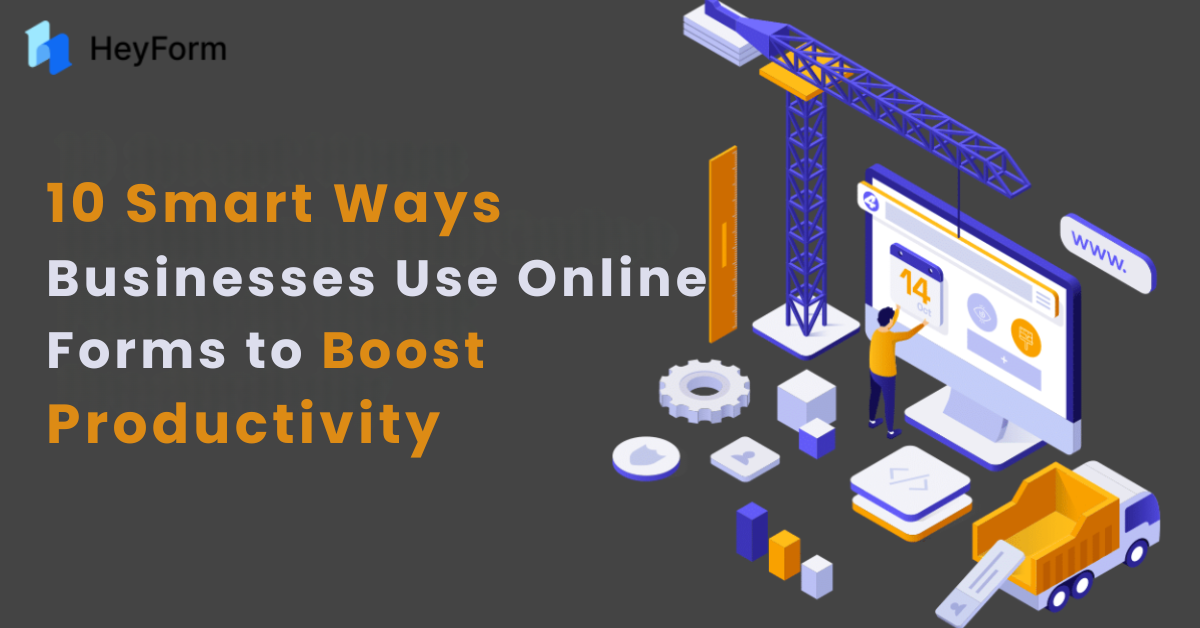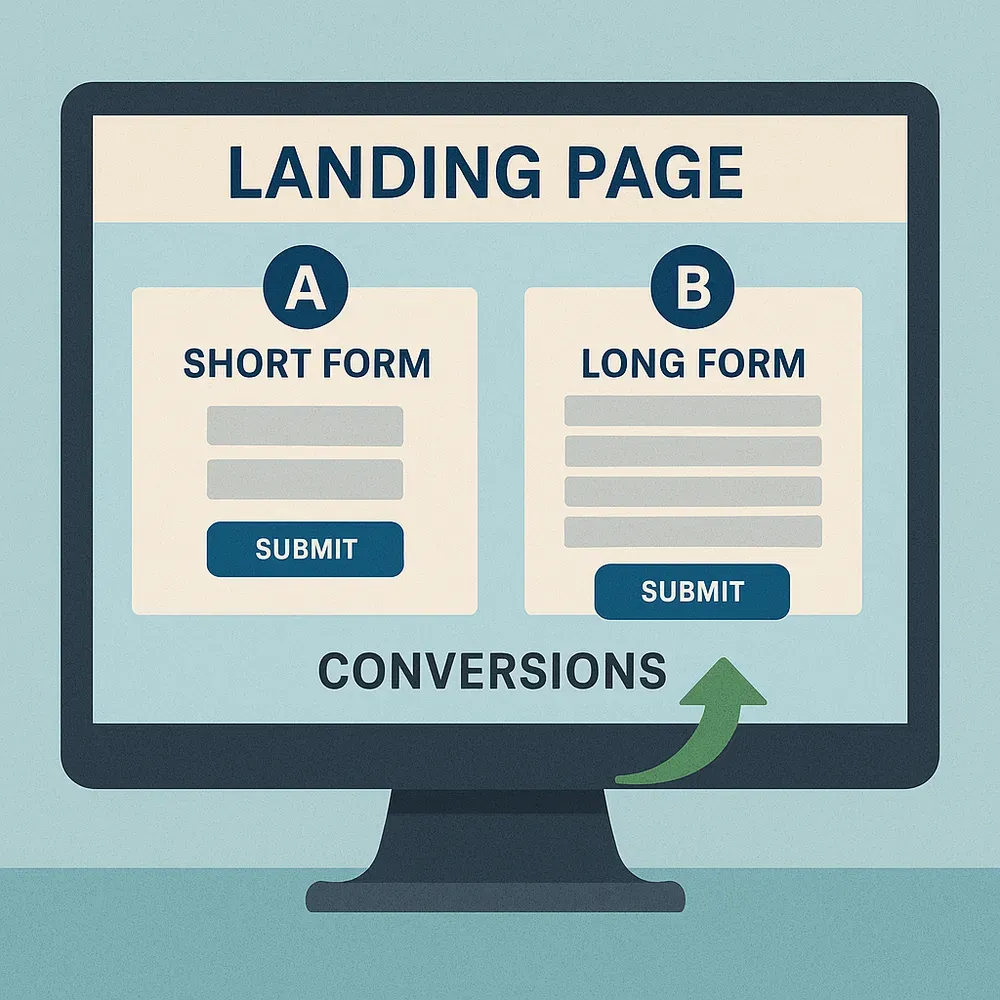10 Smart Ways Businesses Use Online Forms to Boost Productivity

In today’s hyper-competitive business landscape, productivity isn’t just a buzzword—it’s a survival strategy. According to a McKinsey report, companies that prioritize workflow automation and digital tools see a 20-30% increase in operational efficiency. Online forms have emerged as a cornerstone of this transformation, offering businesses a simple yet powerful way to eliminate bottlenecks, reduce human error, and foster collaboration. Platforms like HeyForm take this a step further with intuitive drag-and-drop builders, advanced analytics, and seamless integrations.
10 Innovative Strategies to Enhance Productivity with Online Forms
In this comprehensive guide, we’ll dive into ten actionable strategies businesses use to leverage online forms for productivity gains, data-driven insights, and tips to maximize results with HeyForm.
1. Streamline Data Collection
Manual data entry is a notorious time-sink. A study by Smartsheet found that employees spend 13% of their workweek (6.5 hours) simply correcting errors in spreadsheets. Online forms eliminate this friction by automating data capture and validation. For example:
- HR teams use online forms to onboard employees, collect tax forms, and track emergency contacts.
- Field service teams log equipment inspections via mobile-friendly forms, syncing data to cloud storage in real time.
Traditional vs. Digital Data Collection
Why It Works: HeyForm’s conditional logic ensures users only see relevant fields, reducing abandonment rates. For instance, a healthcare clinic uses branching questions to tailor patient intake forms based on symptoms.
2. Automate Repetitive Workflows
Workflow automation can save businesses up to 240 hours per year per employee, according to Forrester. Online forms act as triggers for multi-step processes:
- A customer support form can auto-generate tickets in Zendesk, notify teams via Slack, and send confirmation emails to users.
- Procurement teams use online forms to route purchase requests to approvers, sync with QuickBooks, and update inventory databases.
Pro Tip: Pair HeyForm with Zapier to connect with 5,000+ apps like Trello, Google Sheets, and Mailchimp.
3. Enhance Customer Feedback Loops

Customer-centric companies are 60% more profitable than competitors, per Deloitte. Online forms make it easy to gather and act on feedback:
- Post-purchase surveys identify pain points (e.g., shipping delays).
- NPS (Net Promoter Score) forms measure loyalty and segment customers into promoters/detractors.
Top Metrics Tracked via Feedback Forms
- Net Promoter Score (NPS): “How likely are you to recommend us?”
- Customer Satisfaction (CSAT): “Rate your experience from 1-5.”
- Customer Effort Score (CES): “How easy was it to resolve your issue?”
4. Simplify Event Registrations
Event planning is riddled with logistics. Online forms consolidate RSVPs, payments, and preferences into a single workflow:
- Nonprofits use online forms to sell tickets, collect donations, and track attendee dietary restrictions.
- Corporate trainers automate webinar sign-ups with calendar integrations (e.g., Google Calendar).
Event Registration Form Features
Try HeyForm’s event template for your next conference.
5. Improve Employee Onboarding
A poor onboarding experience doubles the risk of employee turnover, says Gallup. Digital forms streamline the process:
- New hires submit personal details, sign policies, and select benefits via a centralized portal.
- HR teams can use online forms templates to create interactive checklists for equipment setup, training, and mentorship pairing.
Discover proven strategies in our blog: Remote Hiring and Onboarding with HeyForm.
6. Manage Project Requests
Miscommunication costs businesses $420,000 per year on average (SHRM). Online forms standardize project submissions:
- IT departments track software requests with drop-downs for urgency and category.
- Creative teams use embedded file uploads to collect brand assets for design briefs.
Manual vs. Form-Based Request Handling
7. Track Inventory in Real Time
Retailers lose $1.75 trillion annually due to overstocking and stockouts (IGD). Online forms bridge the gap:
- Warehouse staff log stock levels via Mobile scans, updating inventory databases instantly.
- Procurement teams set up reorder alerts when supplies dip below thresholds.
8. Facilitate Remote Work
Remote work is here to stay—74% of companies plan to shift to hybrid models (Gartner). Online forms keep distributed teams aligned:
- Expense reports: Employees snap receipts and submit claims via mobile forms.
- Time-off requests: Managers auto-approve PTO based on preset rules (e.g., remaining leave balance).
9. Generate High-Quality Leads
Companies using automated lead nurturing see a 451% increase in qualified leads (Annuitas). Online forms turn visitors into prospects:
- Gated content: Offer eBooks or webinars in exchange for contact info.
- A/B testing: Experiment with form lengths, CTAs, and questions to boost conversions.

Convert more leads with HeyForm’s prebuild templates.
10. Monitor Customer Satisfaction
A 5% increase in retention can lift profits by 25-95% (Harvard Business Review). Post-service surveys help businesses:
- Identify at-risk customers before they churn.
- Turn detractors into promoters with personalized follow-ups.
Final Thoughts
Online forms are no longer just a data collection tool—they’re a strategic asset for modern businesses. From slashing administrative costs to building customer loyalty, platforms like HeyForm empower teams to focus on high-value tasks instead of manual drudgery.
Ready to supercharge your productivity? Start your 7-day free HeyForm trial and unock all features.
